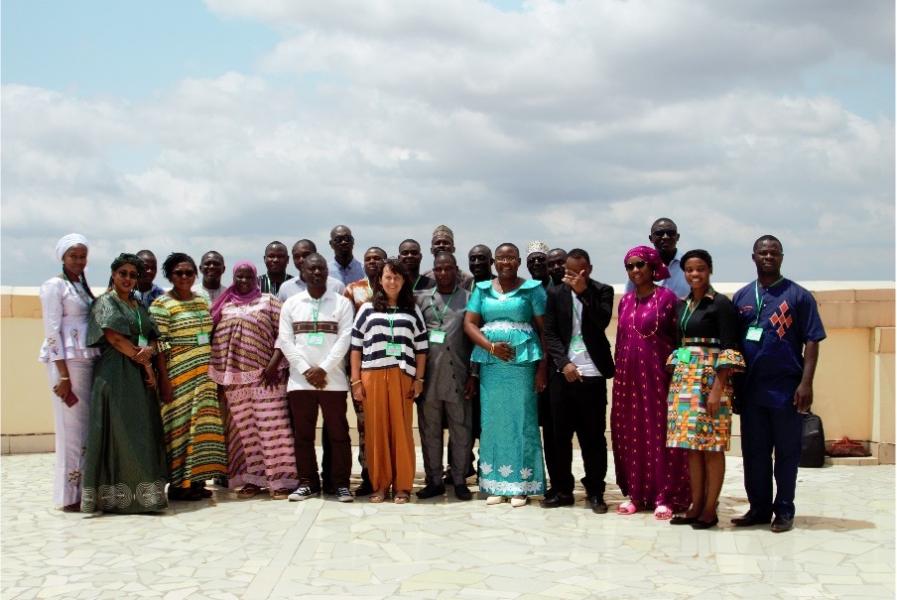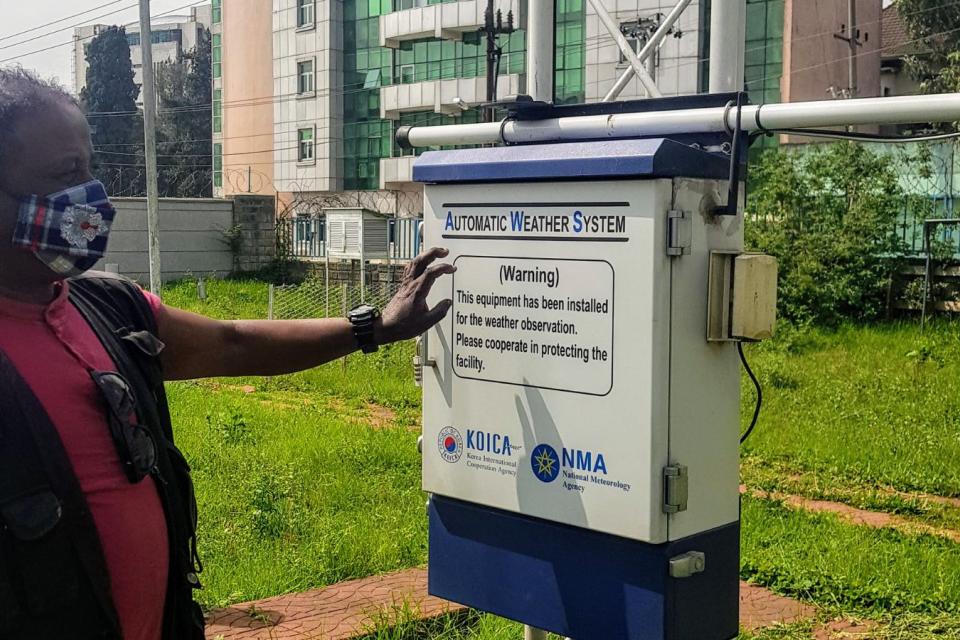

Meet the next generation of Africa’s climate forecasters
New AICCRA-supported state-of-the-art forecasting systems are enabling regional and national meteorological agencies to generate timely and decision-relevant climate information for their agricultural sectors.
East Africa is experiencing some of the worst drought conditions in decades. On the other side of the continent, Nigeria, Cameroon and other West African countries have been dealing with devastating floods that have displaced more than a million people.
The demand for accurate and actionable forecasting to protect life and property has never before been more urgent.
Recognizing this, the AICCRA project recently organized two regional-scale trainings to introduce and increase the use of a state-of-the art seasonal forecasting system known as “NextGen”, which has already been adopted by more than a dozen countries in Central and South America.
The trainings—one held in Zanzibar, Tanzania and the other in Lomé, Togo—brought together staff from the national meteorological services of 17 countries as well as those working in two regional climate centers: East Africa’s IGAD Climate Prediction and Applications Centre (ICPAC), and West Africa’s Regional Center for Training and Application in Agrometeorology and Operational Hydrology (Agrhymet).
As a result of these trainings, both ICPAC and Agrhymet have begun using NextGen-based forecasting in their operations. This is significant because national meteorological services integrate the climate forecasts produced by the regional centers into their own forecast production.
Such an outcome directly aligns with AICCRA’s goal of giving farmers access to advisory services based on high-quality climate information so that they anticipate climate-related events and take preventative action to safeguard their livelihoods and communities.
Being able to have access to reliable, location-specific forecasts enables the kinds of tailored advisories that farmers as well as staff from humanitarian and development agencies need for planning and supporting agricultural growth and resilience.


October 2022 | Forecasters from 10 national meteorological services in East and Southern Africa (left) and seven national meteorologist services in West Africa (right) were trained alongside their regional climate centers to produce best-available seasonal forecasts for their countries.
A longstanding need for objective climate forecasts for decision makers
The “NextGen” forecasting system, which is based on more than 25 years of research at Columbia University’s International Research Institute for Climate and Society (IRI), helps countries to quickly produce high-resolution, location-specific forecasts that can be easily communicated to agricultural decision makers and planners.
In other words, it produces forecasts that are actually actionable, which has not always been the case in Africa.
This is important because weather and climate forecasts in Africa are more than a matter of carrying an umbrella on a rainy day.
They affect the lives and livelihoods of millions of people who depend on the rainy season for food, income, and the well-being of their families.
And much of the agriculture in East and West Africa is still rainfed, meaning farmers rarely have access to irrigation during times of low or no rain.
“The seasonal forecast is used for individuals, municipalities, and even the government as a whole, especially for managing risk. Will there be flooding? Will we get enough rains for agriculture? What will we do [to manage this risk]?”
Francisca Martey, Deputy Director of the Ghana Meteorological Agency and one of the trainees at the event in Lomé, Togo.
When time is of the essence
By late 2022, devastating floods in Nigeria affected more than 90% of the country’s districts and displaced more than 1.4 million people.
“It’s so important to have good information and early warning so that we can act before [this extreme flooding] comes,” said Bello Ahmed of the Nigerian Meteorological Agency, also a trainee at the Lomé event.
The NextGen system makes the forecasting process easier, he said.
When forecasters such as Ahmed can generate high-quality forecasts much more quickly than they used to, they have more time to focus on research and other activities that are critical for improving the forecast in the long-run.
“[NextGen] allows you to assemble the forecast very quickly and easily, and also assess its skill [quality] easily. With that, we can produce better forecasts.”
Bello Ahmed, Nigeria Meteorological Agency
Communication is key
The two AICCRA trainings emphasized the relevance of forecasts to decision-making, and the importance of various communication channels, approaches, and formats for ensuring this.
In doing so, the training organizers underscored the role that national meteorological services can have in supporting and tailoring the use of forecasts—not just its generation—and even helped changed the mindset of some meteorological service staff toward this end.
Participants learned about a new way of communicating and visualizing forecasts with NextGen.
Historically, seasonal forecasts show the likelihood of a location receiving “above-normal” or “below-normal” rainfall amounts. But these categories are generally too vague to inform any meaningful agricultural planning.
NextGen forecasts have the option of showing the probability of exceeding or not exceeding a certain amount of rainfall.
This format is a game-changer for those in the agricultural space.
By communicating the forecast in this way, people can make decisions about what crop varieties to use for the coming season, based on their water requirements, for example.
Decisions like this can make the difference between food security and insecurity.
“The regional approach to training is best because when you bring people with different levels of understanding, it’s a great opportunity to exchange and learn. If you have someone at a lower level, he or she can interact with someone above them without feeling shy. It’s a free environment and the best way for people to learn."
Eunice Koech, ICPAC

Carrying it forward: Peer-to-peer learning and south-south collaboration
One of the goals of the training events was to create a strong network within the African meteorological community to help advance the generation of high-quality climate information and services.
Conducting each training as a region-wide event allowed for peer-to-peer exchanges that build a community of practice that will hopefully sustain, cultivate, and even expand on the capacities and relationships established in Lomé and Zanzibar.
There’s an additional dimension to the trainings’ success: they’ve fostered the kind of local ownership and intracontinental collaboration necessary to carry forward efforts to improve seasonal forecasting within and beyond the countries targeted in the trainings.
These exchanges are now continuing through the formation of a ‘South-South’ community of practice supported by digital resources and channels for communication both within and between East and West Africa.
“I appreciate that IRI and AICCRA have tried to create a community around seasonal forecasting that will allow us to do so much. The community that has been created around this tool will really allow it to flourish. I would not be surprised to see a lot of people around this table leading [new trainings] on this continent. I really see it as ours now.”
Bello Ahmed
Authors
Amanda Grossi, Senior Staff Associate, International Research Institute for Climate and Society (IRI)
Francesco Fiondella, Director of Communications, IRI
Further reading
- East and Southern Africa Regional Training On the Improved NextGen Seasonal Forecasting Approach (PyCPT 2) by Grossi et al.
- West Africa Regional Training On the Improved NextGen Seasonal Forecasting Approach (PyCPT 2) by Grossi et al.
- The Next Generation of Climate Forecasts
- Flexible forecast presentation overcomes longstanding obstacles to using probabilistic seasonal forecasts by Hansen et al.

